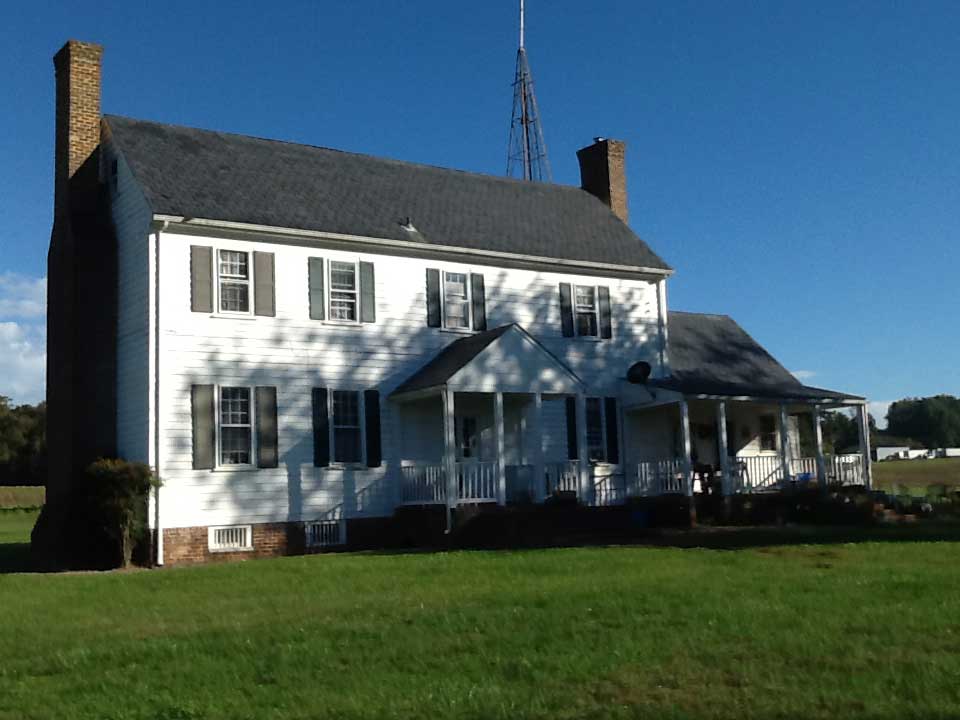Locust Grove offers a rich history
Published 11:21 am Tuesday, October 27, 2015

- The view from the rear of the old Duncan home place shows the chimney on the left that was rebuilt after being struck by lightning in the mid-1980s. A brick marking the original date of the home with 1815 carved on it was never found during the repair.
By Noel Oliver
The Farmville Herald
The 200-year-old Duncan home on Duncan Store Road in northern Cumberland County still stands tall, not only as the original home place of the Duncan family, but as one of the many historical places that the county is so rich with.
Trending
The white, two-story wood-framed house is in excellent condition and belies its age. Known as Locust Grove, the place was once used as a tavern, according to “Crucible and Cornerstone: A history of Cumberland County, Virginia.”
According to Robert Duncan — one of the four surviving siblings who grew up there — the home was built in 1815.
“I’m not sure of all of the history of the home, but there is a headstone over in the side yard of an Anderson that lived from 1821 to 1887. I would guess he lived right here. My brother found a deed that says daddy bought the house and farm in 1930. That’s when we moved over here,” Duncan said.
“Before that, we lived in the back of the old store up on the corner,” Duncan said, nodding toward Duncan’s store at the crossroads.
“In fact, all four of us — three brothers and one sister — were born in the back of that store,” he said. “After that, I guess my dad figured it was time for us to move into a house.”
Trending
The home contains volumes of history that Duncan is willing to share to share with others. “See the top of that chimney that is closest to the driveway,” he said, pointing up to the top of the old home. “Well, there was a brick in the top of that chimney that had the date 1815 carved into it. I guess around [19]83 or [19]84 that chimney got hit by lightning and it tore it up pretty good about halfway down the gable. I know it was around that time because we stopped milking in 1987, and it was hit several years before that,” he said.
“You know we looked for that one brick the whole time the chimney was being repaired. It was important, you know?” Duncan said of the brick, noting that it was never found.
The Duncan home shows very little evidence of its age — a sign of the care it has received over the years.
A major tell of the passage of time on the property is the missing wind vane at the top of the old windmill that pumped water into the house — the tower of which still stands in the front yard. Today it serves as a makeshift arbor for an opportunistic wildflower vine.
According to Duncan, the old English-style basement exterior was filled in long before anyone could remember.
The old house’s exterior stands today very much as it has for two centuries, said Duncan, as a clean, solid structure with straight lines that complement its handmade craftsmanship.
Duncan can validate its structural authenticity through his lifetime.
“Honestly, I think the only thing my dad ever did to the place was put wider steps on the outside of the house,” Duncan said. The original steps were only a little over two-[feet] wide it seemed, they were just too narrow to really be able to do anything with.”
Behind the house stands the outbuildings one would expect to find on a once-working dairy farm, including a brick and slate dairy barn.
Duncan reminisced proudly as he opened one of the doors: “This old barn has two-foot-thick brick walls, and the whole roof is slate. Two men built this whole barn, just two men,” he said. “That’s something you don’t see every day, those fellows put a lot of work into this place,” he said of the round milking parlor, complete with a round, crowned roof.
Robert observed while looking around the expanse of field surrounding the home and barn, “This all began when a man plowed his fields with a mule, or most of them did. Very few tractors were around here back then,” Duncan said.
The Duncan home place is presently occupied by an employee that helps on the farm. The Duncan siblings all live close by. None of them are too far from the old wood-frame house they still call home.






